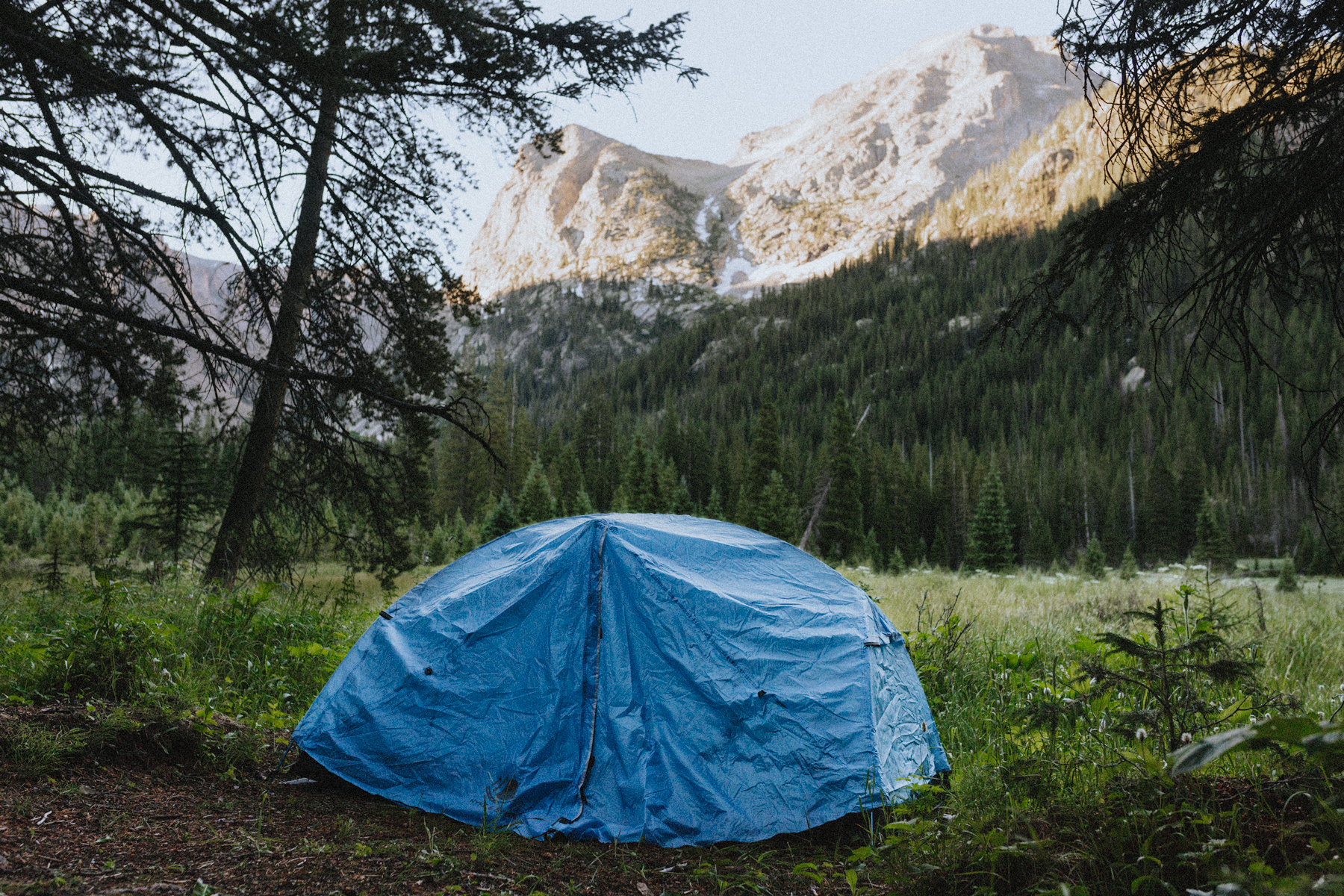
Camping Gear: Everything You Need to Stay Overnight in the Backcountry
Having the right gear can make all the difference when camping in the backcountry. As an avid outdoor enthusiast, I’m excited to share my comprehensive guide on everything you need for a comfortable and memorable camping trip.
Although this is a comprehensive gear list, each camping trip is different. Every person, location, and intended experience will require slightly different things. Consider each item and whether or not it’s something you actually need!
This post will cover what you need for:
• Shelter
• Sleeping
• Camp kitchen supplies
• Clothes
• Entertainment
• Other miscellaneous items
Please keep in mind:
This post is written from the lens of someone who primarily camps during the summer in Colorado’s Rocky Mountains. Although many items on this list are universal to camping, please consider whether or not any recommended products fit YOUR unique situation. For example, a sleeping bag that keeps you warm in 50-degree weather is not what you need for camping somewhere that stays warm overnight. BUT that is perfect for camping in the Rockies during summer.
Disclaimer: All recommended products have been independently researched and reviewed. As an Amazon Associate, I earn from qualifying purchases.
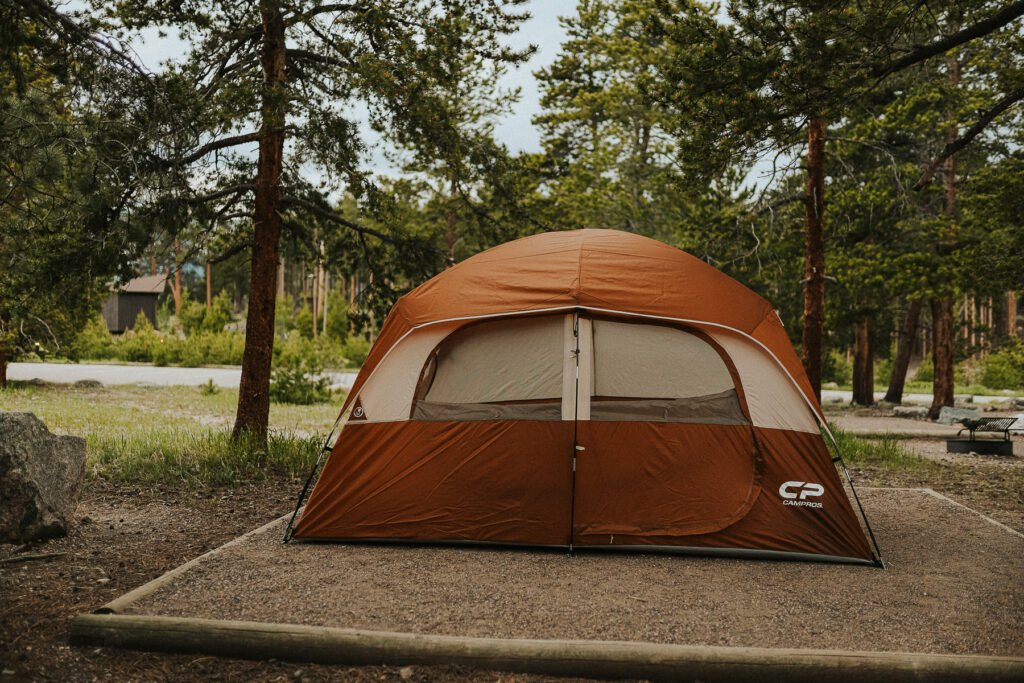
Shelter and Sleeping
A good night’s sleep and reliable shelter are essential for a comfortable camping experience. The right gear is crucial for comfort, protection, and restful sleep in the backcountry.
Tent (with stakes)
Choosing a good tent is one of the most important things for a comfortable camping trip. It provides shelter, protection, and a cozy retreat after a day of outdoor exploration. There are many tents to choose from, from small and simple to large glamping tents. Choosing the right tent will heavily depend on personal preference. However, everyone should look for waterproofing, sturdy poles and materials, and quality construction. Make sure it has plenty of space for everyone sleeping there and any stored supplies. With the right tent, you can enjoy a comfortable and secure camping experience.
Recommended Products:
Coleman Sundome Camping Tent
CORE 10 Person MultiRoom Tent
Sleeping bags
The right sleeping bag will help you have a cozy and comfortable night’s sleep. It’s one of the most important temperature control items while sleeping. When searching for a sleeping bag, research the climates and temperatures in which you will be using it. Choose one (or multiple!) to keep you warm or cool, as needed. Other things to look for while researching sleeping bags are insulation type, weight, and packability. Features like a hood, draft collar, and zipper baffles help minimize heat loss. The size and shape should allow for comfortable movement while providing an efficient heat-trapping (or cooling!) design.
Recommended Products:
Unigear Campy Trail Sleeping Bag (Summer)
KingCamp Mummy Down Sleeping BaG (Cold Weather)
Sleeping pads or Air mattress
Sleeping pads and air mattresses are additional items to help you stay comfortable while sleeping outdoors. Sleeping pads, which are typically made of foam or inflatable materials, offer insulation and cushioning. They are lightweight, ideal for backpacking, and provide excellent insulation from the old ground.
On the other hand, air mattresses offer superior comfort with their cushioning and larger surface area. They’re excellent for car camping and drive-up campsites. Where air mattresses are lacking is in their portability. Air mattresses are bulkier, heavier, and require a pump, making them unsuitable for backpacking.
Recommended Products:
Sierra Designs Queen Camping Air Mattress (Pump Included)
WANNTS Ultralight Inflatable Sleeping Pad
Lantern
The last thing you want while camping is to be without access to a good light source at night. Lanterns provide the lighting necessary for working around the campsite after dark, such as preparing meals, reading in your tent, or making any unexpected adjustments to your site.
Recommended Item:
LED Camping Lantern
Headlamps
Everyone should have their own headlamps. While lanterns should provide most of the light, it’s great to have a hands-free option that will illuminate whatever you’re looking at. Headlamps are great when you need to search for something or get up and use the bathroom at night.
Recommended Item:
Energizer Water Resistant LED Headlamp
Pillows
Pillows are pretty self-explanatory. Everyone wants a comfortable spot to rest their head at night. For car camping or drive-up sites, a regular pillow works great. For backpacking and other weight-conscious trips, look into getting an inflatable pillow.
Recommended Products:
Memory Foam Camping pillow
Hikenture Camping Pillow | Ultralight & Inflatable
Blankets
Blankets are a personal preference. If anything, I recommend at least bringing one to use while sitting around your campsite at night. If you’re not bringing a sleeping bag, you’ll definitely want to bring some blankets. My favorite sleeping setup for drive-up campsites is to bring a sleeping bag, sheets, blankets, and pillows.
Recommended Products:
Mexican Blanket
Arcturus Wool Blanket
Camping chairs or stools
Even if you have a table, you’ll likely want chairs or stools to sit wherever you’d like, such as around the campfire. Bring at least one chair or stool per person.
Recommended Products:
MARCHWAY Lightweight Folding Camping Chair
Opliy Camping Stool
Tent footprint or tarp
Although having a tent footprint or tarp isn’t required, it will help your tent last longer and keep you more comfortable. This is especially true when you’re tent is not on a surface made explicitly for one. A tent footprint or tarp will keep the bottom of your tent clean and prevent rocks, pine needles, and other debris from poking through.
Recommended Products:
HIKEMAN Waterproof Tent Tarp
Waterproof Camping Tarp
Ten repair kit
Hopefully, you won’t need this. But you should always bring one in case. Damage to your tent could compromise your security while camping. You don’t want rain or critters to be able to make their way through.
Recommended Products:
Tent Repair Tape
Tent Pole Repair Tape
Emergency blanket (a.k.a. Space blanket)
Emergency blankets trap body heat to keep you warm. They’re ultralight and cheap. Suppose you’re sleeping in cold weather under blankets (instead of a cold-weather sleeping bag). In that case, an emergency blanket will keep you warm. I like to layer them between a top sheet and a blanket. They have a thin, tinfoil-like quality, so I don’t like sleeping directly under one without a top sheet. Additionally, carrying an emergency blanket in cold climates is always a good idea. They can ward off hypothermia, quickly dry clothes, act as a sunshade, and collect water.
Find it on Amazon:
Emergency Thermal Blanket
Hammock (optional)
Hammocks are an excellent way to relax in nature. There are a ton of lightweight, portable ones on the market. Although not necessary, hammocks can really elevate your camping experience.
Recommended Products:
Eno Doublenest Hammock | Leave no trace special edition
Eno Doublenest Hammock | Lagoon
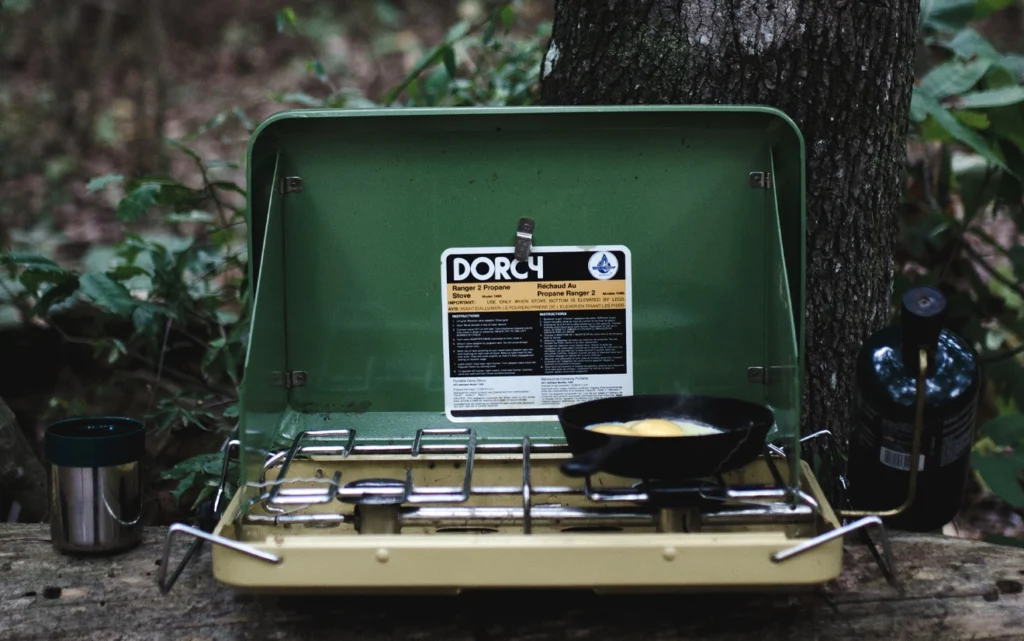
Cooking & Eating
An adequately stocked camp kitchen will ensure you have the tools needed to prepare tasty and nutritious meals. What you should bring depends on your preference and what you plan to cook.
I recommend starting with a meal plan. Consider what you and your group would want to eat, the time and skill to make certain meals, and the equipment needed. Remember, just because you have the skill doesn’t mean you’ll always have the TIME. For example, I’ll typically make canned chili for dinner on busy trips. However, on more relaxed trips where I have more time, I’d make campfire nachos, burgers, or BBQ chicken.
Then, determine what you will need to cook and eat the meals. Read over the list and consider whether or not each item is necessary for your trip.
Camping stove & fuel
You can enjoy hot meals with a camp stove regardless of fire restrictions. They’re convenient, efficient, and allow you to cook with precision and control. Campfire cooking is great, but it can take a lot of extra work. Camping stoves will help save time, especially in the mornings when you may want a quick hot meal.
Recommended Products:
Hike Crew 2 in 1 Camp Stove | Portable Propane Grill and Stove Burner
Coleman Single Burner Camp Stove
Cookware (pots, pans, griddle, etc.)
When choosing cookware, prioritize durability, functionality, and how easy it is to clean. Opt for lightweight, rugged materials such as stainless steel or cast iron. A versatile cookware set typically includes a frying pan, a few pots with lids, and a kettle. Non-stick pans can simplify cleaning while nesting or stackable designs help optimize storage space. Remember to choose sizes that suit your group’s needs. Consider any specialized cookware required for specific meals or techniques you plan to employ.
Recommended Products:
Large Camping Cook Set
Camping Cookware Set with mini stove
Cooking Utensils
In addition to pots and pans, proper cooking utensils are essential. Consider bringing a spatula, tongs, and a large serving spoon. A sharp knife with a sheath is indispensable for food prep. Additionally, a can opener will come in handy for accessing canned goods. Measuring cups are also helpful if you need exact measurements.
Look for compact and collapsable utensils or multi-purpose tools to help save space. Don’t forget a set of heat-resistant cooking gloves to safely handle hot pots and pans.
Recommended Products:
Large Camping Cook Set
Basic Camping Cookware Set
Skewers
Additionally, if you plan to make hotdogs, kebabs, or s’mores, remember skewers!
Order on Amazon:
100 pack of Skewers
Cutting board
Make sure to bring a cutting board with your cookware if needed. When choosing a cutting board for camping, look for one that is easy to clean, non-slip, lightweight, and durable.
Recommended Products:
Bamboo Cutting Board
Lightweight Plastic Cutting Board
Camp plates, bowls, and cups
Of course, once you make the food, you’ll need a way to eat it. Bring lightweight and durable camp plates, bowls, and cups for everyone. Invest in dedicated camp dining ware that eliminates the need for disposable alternatives. As nature lovers, we want to minimize waste and promote eco-friendly practices!
Recommended Products:
4 Person Camping Dinnerware Set
1–2 Person Camping Mess Kit
Eating Utensils (Forks, knives, spoons)
You’ll also need eating utensils, such as forks, knives, and spoons. To save on space, consider getting a three-in-one utensil tool. One side has a fork, the other a spoon, and along one edge is ridged like a knife. I have to admit, the knife part could be better. Reserve it for soft and small items like butter. You’ll need a more robust knife for cutting things like meat.
Recommended Products:
4 Person Camp Utensil Set
3-in-1 Camp Utensil Set
Bottle opener
If you want to enjoy a few ‘cold ones’ on your trip, a bottle opener may be necessary if you drink from bottles. Often, can openers double as bottle openers. I’d check that before buying one.
Recommended Products:
Simple Magnetic Bottle Opener
Wine + Bottle Opener
Cooler or ice chest, plus ice
You’ll need a cooler or ice chest if you plan to bring perishable food items or cold beverages. Opt for one with excellent insulation and a secure lid to maintain a cold temperature for an extended period. Get a cooler (or multiple) that will fit everything needed to store your (and your groups, if applicable) food.
Recommended Products:
Yeti Cooler
Insulated Cooler Bag
Bear Container (if in bear country)
You need a bear container if you plan to camp in bear country. Some places even legally require you to have one, so check the laws if you’re considering going without one. Bear Containers trap in smells and prevent bears from opening them. Bears have an incredible sense of smell. In fact, grizzly and black bears can smell food from up to 20 miles away. Not using a bear container puts your and the bear’s lives and well-being at risk. You can be attacked, and bears that get human food are put down in some areas.
Recommended Products:
Medium BearVault Container
XL Bearvault Container
Refillable water bottles
Staying hydrated is essential to your health and well-being. Make sure to bring plenty of water, plus a refillable water bottle for everyone in the group. Bring more water than you expect, and remember, higher elevations and participating in outdoor activities can dehydrate you faster than usual.
Recommended Products:
Hydroflask Water bottle
Large Stainless Steel Water Bottle
Water purifier
If you’re camping somewhere without access to clean water, bringing a water purifier is wise. Even natural water sources that appear pristine need to be filtered before drinking. Even though it may look clean, it can still harbor harmful bacteria, parasites, and contaminants. A portable water purifier allows you to filter and purify water from rivers, lakes, and streams to make it safe for consumption.
Recommended Products:
Sawyer Water Filtration System
Aquatabs Water Purification Tablets
Coffee maker, such as a French press
If you’re anything like me, you MUST have coffee to start your day. Bring a simple coffee maker such as a French press or pour over to easily make coffee. All you need to do is add coffee grounds to the maker, boil some water, then pour it over or in the coffee maker (depending on the type). The supplies are relatively cheap, and no electricity is needed.
Recommended Products:
Camping Pour Over Coffee Maker
French Press
Portable folding table (if the campsite doesn’t already have a picnic table)
If your campsite doesn’t have a table, or if you have a large group, bring a portable folding table. This can be used to eat, serve, and/or prep food or for activities such as card games or crafts.
Recommended Products:
Coleman Folding Table
Portable Camping Table with Carrying Bag
Kitchen clothes/paper towels
Bring reusable kitchen rags and paper towels to keep yourself and the campsite clean.
Recommended Products:
Quick Dry Camping towels
Microfiber Towel
Ziploc bags
Ziploc bags can store leftover food, snacks, and small items. If you plan to go on several hikes, it’s wise to bring a large box of trail mix or other snacks and then store them in ziplock bags during the hike. They’re also helpful for storing batteries and small tools.
Recommended Products:
Opsak (Traps in smells to prevent attracting wild animals)
Ziplock Bags — Order Them online
Garbage bags
Make sure you bring enough garbage bags to store your trash. I also like putting dirty clothes in garbage bags to separate them from clean clothes.
Recommended Products:
Pop-Up Trash Can
Order online
Picnic table cover
Let’s face it, picnic tables can get gross. Whether it’s from previous people, critters running around, or your own food prep, it’s smart to bring a table cover.
Recommended Products:
Picnic Table Cover with Cute Camping Design
Classic Picnic Table COver
Food
Last but not least, bring plenty of food, including meals and snacks. Bring more than you’ll need to ensure no one goes hungry. Bring plenty of snacks, such as trail mix and cliff bars. Remember your essentials, too, such as olive oil and spices.
Check out this list of 100 camping recipes from The Roving Foley’s Blog.
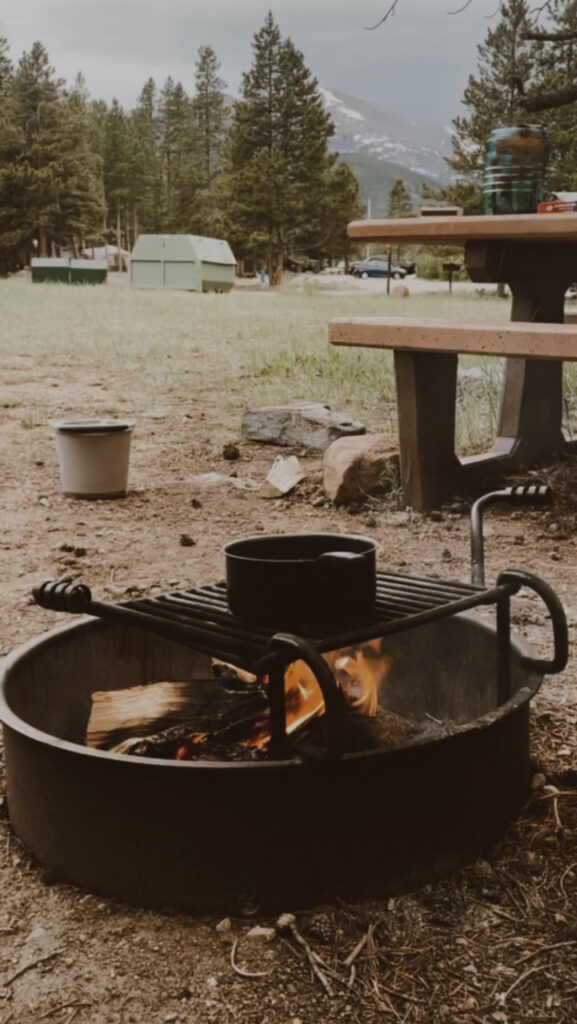
What You Need to Make a Campfire
Before anything, make sure it’s safe and legal to make a campfire at your campsite. Always follow campfire best practices, including putting it out entirely before leaving or going to sleep. Not doing so could result in death, destruction, and financial loss. Not just to you but to the people, animals, and landscape thousands of miles away. (For reference, the largest wildfire in modern history burned almost half a million miles of land).
Firewood
If you plan to make a fire, bring firewood. Some campsites allow foraging for wood or will have wood available. Others do not. Often, there will be a gas station nearby to pick up wood. However, more remote areas could require a long drive to get to a gas station. Make sure you do your research beforehand!
Fire extinguisher
Fire safety is SUPER important. Not just for you but to keep the surrounding animals, people, homes, and natural landscape safe. Always keep a fire extinguisher on hand if you start a fire. It’s MUCH better to have one and not use it than to need it but not have one.
Recommended Products:
Mini Campfire Extinguisher
Classic Fire Extinguisher
Lighter fluid, matches, and a lighter
In addition to firewood, bring all the tools needed to start a fire. This includes a lighter and/or matches, lighter fluid, kindling, and a poker.
Order Online:
Long Lighter
Box Matches
Fire Starter
Water Bucket
Bring a bucket you can fill with water to extinguish the fire. Pour it over the fire slowly and cover the entire space that could have flames or embers. This can be a simple, cheap bucket.
Recommended Products:
Collapsible Water Buckets
Fabric COllapsible Water Bucket
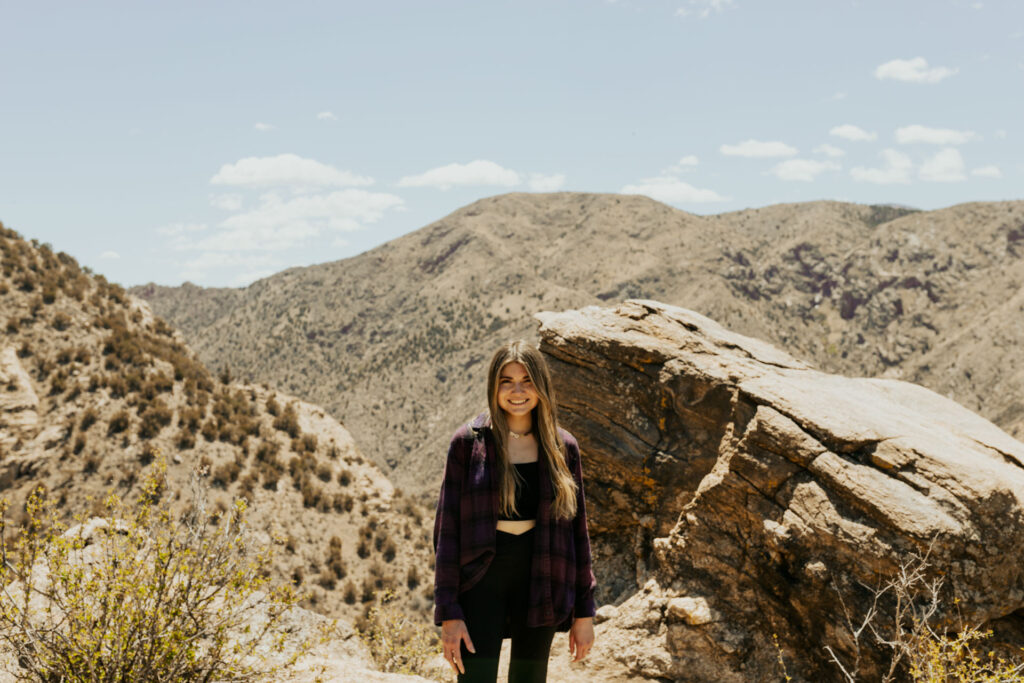
Clothing & Personal Items
Quick dry outfits suitable for the weather (make sure to bring extra layers)
The clothes you bring will depend on personal preference, climate, and weather conditions. However, make sure to bring at least one suitable outfit for each day. Additionally, bring extra layers of varying weights and materials, such as a flannel, a light jacket, and a heavier jacket. Even during summer, temperatures can drop a lot at night, so be prepared!
Shirts
Columbia Quick Dry Camp Shirt for Women
Columbia Men’s Long Sleeve Shirt
Pants
Womens Quick Dry Hiking Pants
Mens Outdoor Joggers
Windbreaker
Womens packable + Waterproof Windbreaker
Columbia Mens Hooded WIndbreaker
Fleece
WOmen’s Fleece Jacket in Green Plaid
Columbia Men’s Fleece Jacket
Extra socks
Women’s Wool Socks
Men’s ADIDAS Crew Socks
Underwear
Aim for moisture wicking materials. Bring extra!
Gloves
Winter Knit Gloves in Gray (Men & WOmen’s)
Rain gear (jacket and pants)
If there’s any chance of rain, bring the right gear! A waterproof jacket and pants are ideal. At the very least, bring a rain poncho in case. I always carry one in my hiking backpack!
Recommended Products:
Rain Jacket from COlumbia
Rain Poncho Pack
Hats
No matter the weather conditions, bringing a hat (or several!) is wise. Beanies will help keep your head warm on cold days or nights. Caps and sun hats will help protect you from the sun. Also, let’s face it. Your hair can get messy while camping, and you may want a cover.
Recommended Products:
VGOGFLY Beanie in Coffee (LOTS of colors available)
Carhartt Cap in Green
Pajamas or sleepwear
Make sure to bring something comfy to sleep in, whether it’s pajamas or a simple t-shirt and sweatpants.
Recommended Products:
Women’s Jogger-Style PJ Set
Men’s Cotton PJ Set
Swimwear (if applicable)
Don’t forget your swimwear if you plan on getting in the water! Also, bring a dedicated towel and a life jacket for the kids.
Recommended Products:
Womens High Waisted Bikini SPorts Set
Men’s Quick Dry Swim Shorts
Sturdy shoes or hiking boots
You should always have a pair of hiking boots or sturdy shoes while exploring the outdoors. The best ones for you will depend on your specific needs. Check out this post if you’re looking for great hiking boots.
Slip-on shoes
In addition to more heavy-duty shoes, you’ll likely want some slip-on sandals for walking around the campsite. This is especially useful when frequently leaving and re-entering your tent.
Recommended Products:
Teva Women’s Sports Sandals
KEEN Targhee 3 Men’s Slide Sandals
Sunglasses
Protect your eyes with a solid pair of outdoor-friendly sunglasses.
Recommended Products:
Goodr No Slip Sunglasses
Polarized Sports Sunglasses
Personal Care
Any personal medications
Don’t forget any prescription medications. I also recommend packing any over-the-counter meds you may need in your First Aid kit, such as pain relievers, decongestants, and anti-itch creams.
Products you may find helpful:
Zyrtec Allergy Pack
Extra Strength Tylenol
Personal Hygiene
Being in the wilderness doesn’t mean you should neglect your personal hygiene. Bringing the right products is vital for ensuring cleanliness, comfort, and overall well-being in the backcountry.
Toothbrush and toothpaste
Collapsible Toothbrush set
Travel Size toothpaste set
Deodorant
Strong, unscented deodorants are best while exploring the outdoors. Unscented items will prevent bears and other animals to become attracted by any perfumes regular deodorant may have.
Native Unscented Deodorant for Men & Women
Bar soap
Bar soap is great for showers, quick rinse-offs, or washing your hands.
Mrs. Meyer’s Bar Soap
Citronella Repelling Bar Soap
Shampoo and conditioner
Bring shampoo and conditioner if you need to wash your hair during the trip. Shampoo bars or dry shampoo also work great for shorter trips.
Amika Dry Shampoo
Maui Moisture Shampoo & Conditioner Set
Skincare Products
Being in the backcountry doesn’t mean you should give up your skincare routine. However, some of us may need to scale back quite a bit. Either way, you should still practice a foundational skincare routine.
Sunscreen
Sunscreen is super important. Not only does it protect you from awful sunburns, but it also helps prevent aging. Expect to have much higher sun exposure than usual while camping.
Neutrogena Dry Touch Sunscreen, SPF 70
Banana Boat Sport Spray Sunscreen, SPF 50
Lip balm
Get a lip balm with SPF to keep your lips moisturized and safe from the sun.
Sun Bum SPF 30 Lip Balm Pack
Aquaphor Healing Lip Balm, SPF 30
Cleanser
With all the sweat and dirt likely to build up while camping, it’s essential to cleanse your face morning and night to prevent bacteria and buildup.
Kale + Green Tea Superfood Cleanser
CeraVe Hydrating Cleanser
Moisturizer
If you have dry skin, remember to moisturize. This goes for your face, hands, and overall body.
CeraVe Face and Body Moisturizing Cream
Paula’s Choice Tinted Moisturizer with SPF 30
Oils and serums (optional)
Even though it’s ideal to keep a simple skincare routine while camping, you can still bring a few specialty products if you’d like! Especially if going without them can throw your skin out of whack after your return.
Bug repellent
Bring bug spray to both keep yourself comfortable and protect yourself from disease. Mosquitos, ticks, and other insects are irritating and pose health risks. Bug spray with DEET or other effective repellents provides a protective barrier against these insects.
Recommended Products:
Off! Deep woods Bug Repellant
Mosquito Repellant Bracelets
Towels (bath and beach)
Bring separate towels for showers and swimming. You may want to bring additional ones, depending on how often you use them and your personal preference.
Recommended Products:
Quick Dry Microfiber Towel
Quick Dry Microfiber Towel — 4 pack with case
Bathroom Supplies
Toilet paper
Even if your campsite has a bathroom, bring toilet paper! You never know when they may be out, especially on busy weekends or in remote areas.
Camping shower (if needed)
Solar Shower Bag
Pop Up Shower & Changing Room Tent
Camping toilet or shovel (if needed)
Camping Toilet Set
Sanitation
Always clean your hands before touching food! This includes snacking while you hike. You never know what kind of unseen bacteria or germs you will pick up while exploring. It’s best to not risk getting sick, especially in the wilderness.
Recommended Products
Hand Sanitizer Wipes
Hand Sanitizer Gel
Feminine Products
If there’s any chance you might start your period while camping, don’t forget to bring tampons, pads, or a menstrual cup.
Collapsible Menstual Cup
Compact Tampons
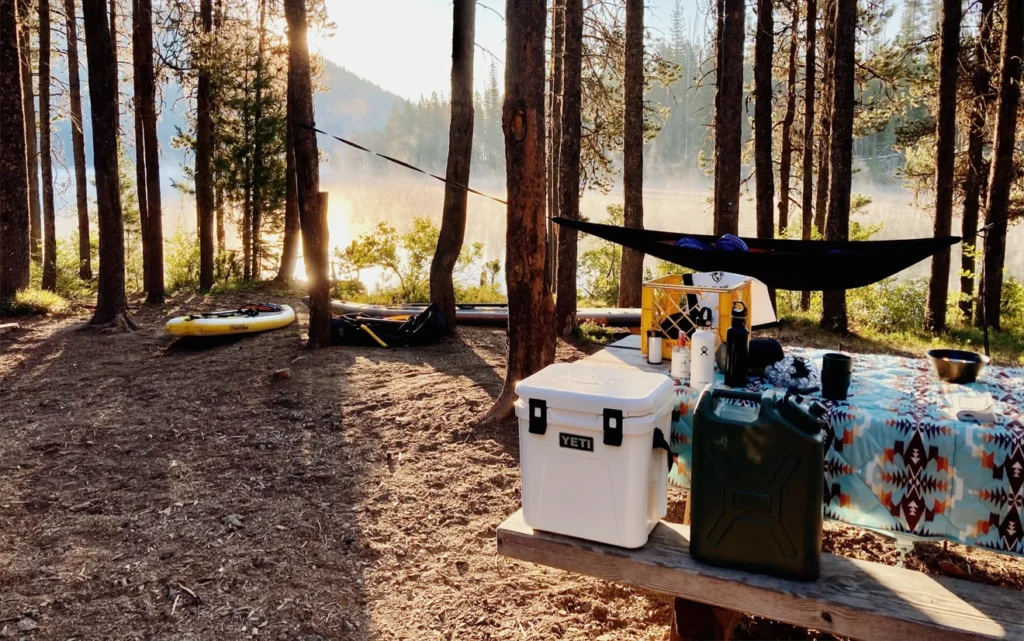
Additional Campsite Essentials
Campsite reservation confirmation and/or permits (if applicable)
If your campsite requires reservations or permits, always have a printed copy on hand. Make sure it stays somewhere safe and won’t get wet or damaged. Cell phone service is spotty, and phones could die. So, print it off to be safe!
Portable charger
A portable charger (or multiple) with adequate battery life to keep your phone and other needed devices charged. Unless you’re backpacking, you’ll likely be able to use your car charger as well. However, you’ll likely need to have a way to charge it overnight. It’s also nice to be able to charge it while hiking, fishing, etc.
Recommended Products:
Portable Power Bank
Mini Portable Charger for iPhone
Extra batteries
Bring plenty of extra batteries for any items that may need them! If you use a battery-operated air pump, it’s essential to bring extra batteries for it. You never know when the battery will drain or become faulty, and you don’t want to be stuck without your needed sleep supplies!
Navigation Tools
Even if you primarily use your phone for navigation, it’s important to bring old-school supplies as a backup, just in case.
Compass or GPS device
Bring a reliable compass or GPS device that has a long battery life and does not depend on the internet or cellular service.
Survival Compass
Garmin InReach Mini Satellite Communicator
Maps of the area
It’s also smart to have maps of the area on hand.
*Safety tip: Keep a map in your car that details your itinerary. If you ever get lost while in the backcountry, like while hiking or backpacking, this can help search and rescue teams locate you.
Multitool
A multitool is a small device packed with important features. It can open cans, cut ropes, tighten screws, and much more. It typically includes a knife, pliers, screwdrivers, scissors, and more, conveniently folded into a portable package.
Recommended Item:
Swiss Army knife Multitool
Duct tape
Duct tape can be an invaluable tool for unexpected breaks and tears. It’s strong and durable, making it a go-to solution for quick fixes and temporary repairs. Whether you need to patch a tent, mend a torn backpack, secure a loose gear component, or improvise a solution for unexpected mishaps, duct tape has got you covered.
Scissors
Scissors are a simple and practical item to bring while camping. They can cut open bags of food, cut rope, trim bandages, and tend to first aid needs. Keep in mind a good multitool with scissors can make it where an additional pair is not needed.
Rope or clothesline
Bring a rope or clothesline if you anticipate needing to dry clothes or towels. The rope can also help set up a shelter, create a makeshift hammock, or secure gear.
Hiking Backpack
If you plan on going hiking, remember your backpack! It’ll carry all the necessary gear, including a reusable water bottle and snacks. Check out our hiking gear checklist here.
First aid kit
Be prepared for minor accidents, injuries, or sicknesses with an adequately supplied first aid kit. Many pre-packed kits specifically for outdoor exploration are available to buy. A good outdoor first aid kit should include bandaids, gauze, antiseptic wipes, tweezers, pain relievers, burn ointments, and antihistamines, among other things.
Recommended Products:
298-piece First Aid Kit
Travel-Size First AId Kit
Portable weather radio
Stay aware of inclement weather with a portable weather radio. Sometimes, unexpected and dangerous weather can occur, especially in the mountains. A portable weather radio helps you stay informed about local weather updates and emergency notifications.
Recommended Products:
Portable Weather Radio with Power Bank & Flashlight
Emergency cash
There are several situations in the backcountry and other remote areas where you won’t be able to use credit cards. Make sure to bring cash just in case for any essentials you may need.
Entertainment
Bring plenty of items to keep yourself and any kids or guests entertained! After your daily adventures are wrapped up and you’re relaxing at your campsite, you may get bored. Amp up the fun with these items.
Lawn Games
There are plenty of fun packable lawn games that are great on a camping trip. My personal favorite is this beautiful travel cornhole set from Elakai Outdoor. Additionally, you could bring giant jenga, racketball, or spike ball.
Recommended Products:
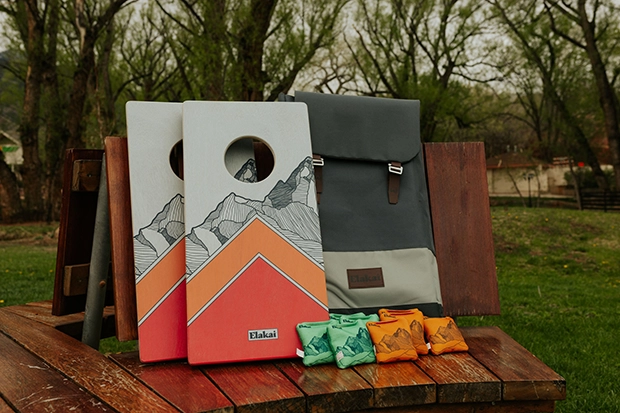
Travel-Sized Corn hole Set from Elakai Outdoor
Spikeball
Card Games
All families have their go-to card games! Embrace the classics or learn new ones from friends. There are so many fun games you can play with the same set of cards.
Recommended Products:
Waterproof Playing Cards
UNO Splash (Water resistant)
S’mores kit
If you want something tasty, fun, and classic, bring a s’mores kit! It’s perfect for both bringing on nostalgia AND making new memories.
Recommended Products:
Marshmallow Roasting Sticks
Hershey’s S’mores Ingredient Kit
Guitar
For the musically inclined, bring a guitar! There’s something so classic and iconic about playing songs around a campfire.
Recommended Products:
Beginner Acoustic Guitar Kit
Campfire Song Book
Books
For more quiet and relaxed entertainment, bring a book! I personally love to curl up in my hammock and read while outdoors.
Check out the best summer reads on Amazon.
Conclusion
I really hope you found this list helpful! Remember, not every item is necessary for a great trip, but consider each one!
Do you have any additional suggestions for camping gear? Or, even lesser-known camping tips or tricks? If so, please share them in the comments below!

















































































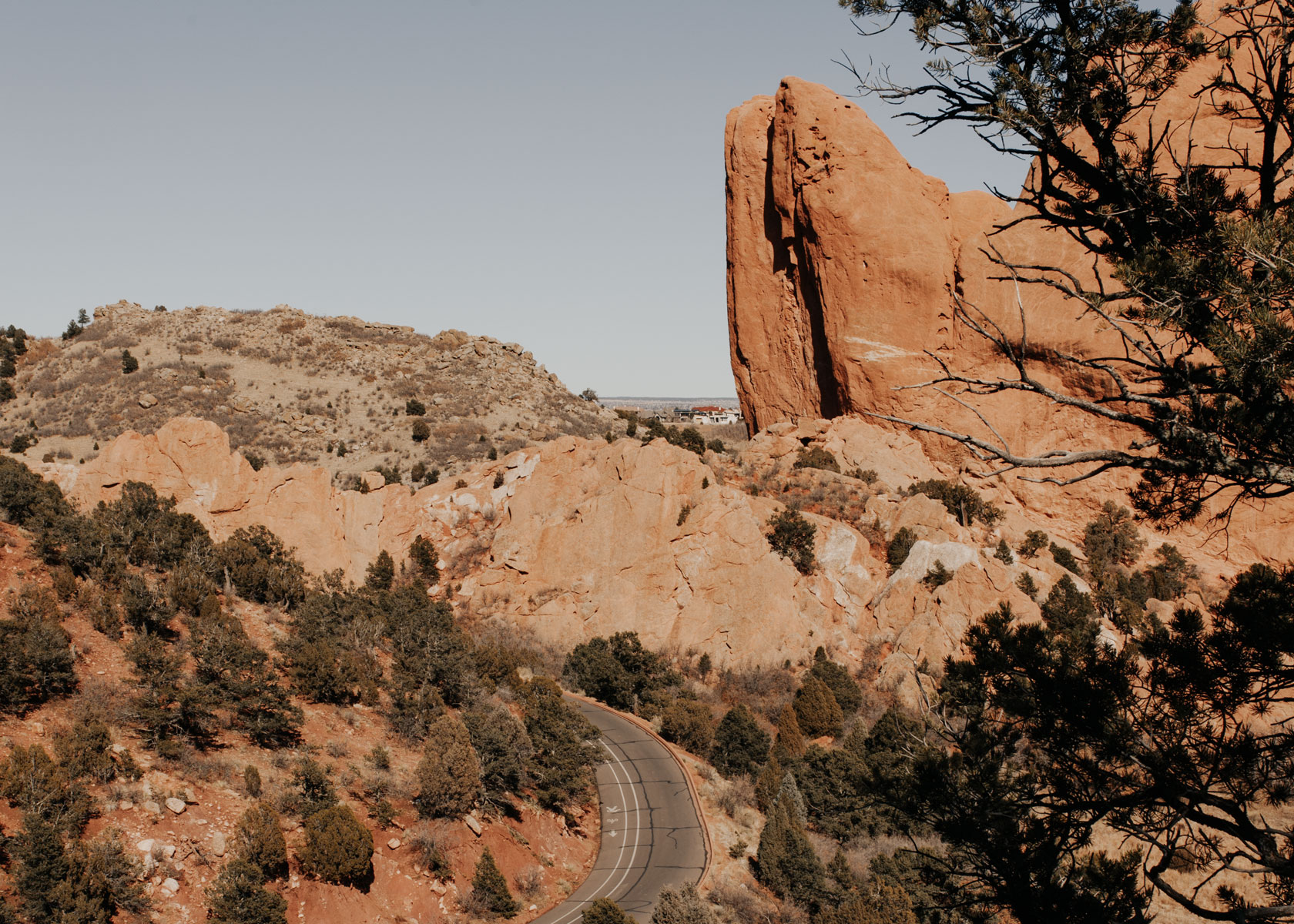
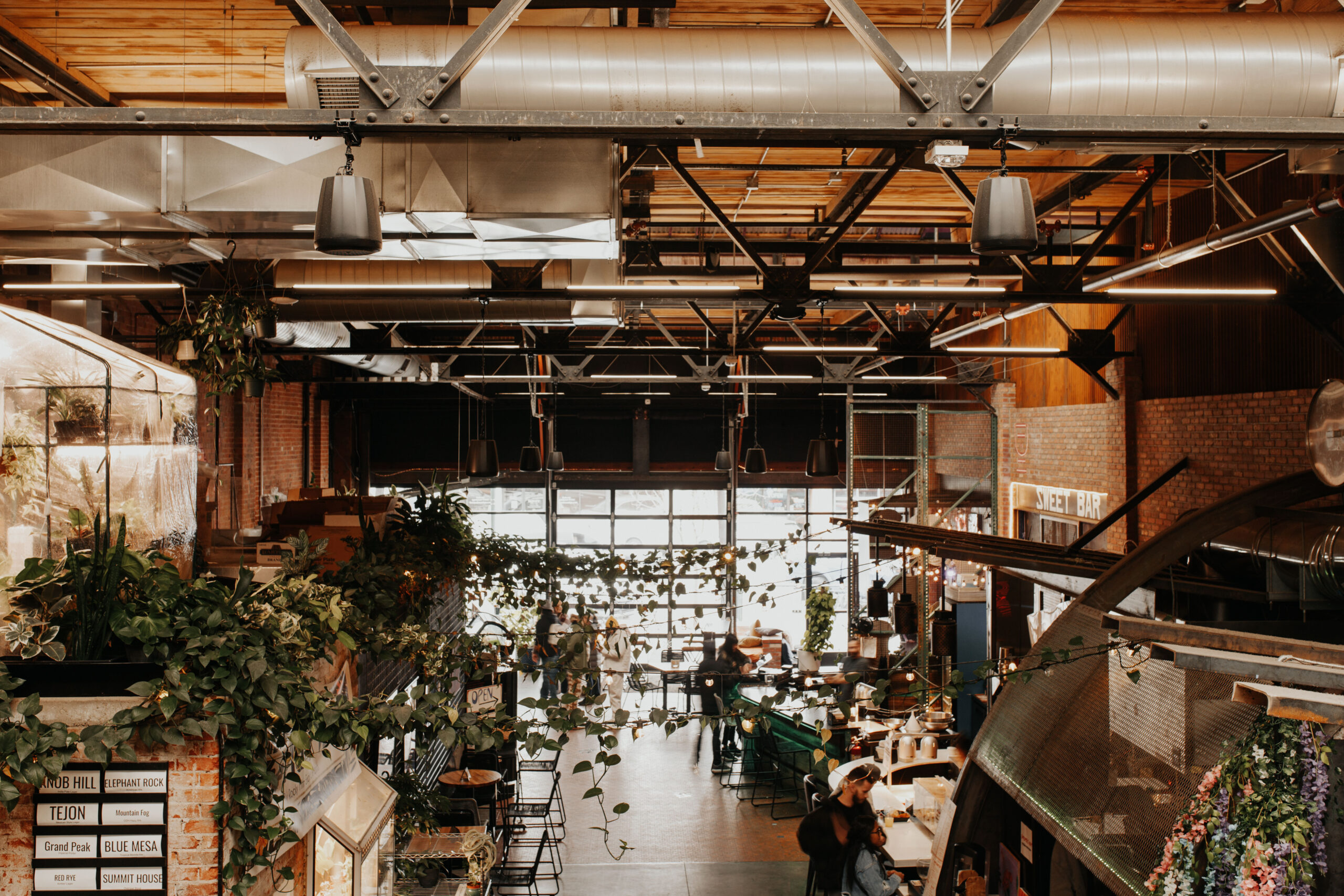

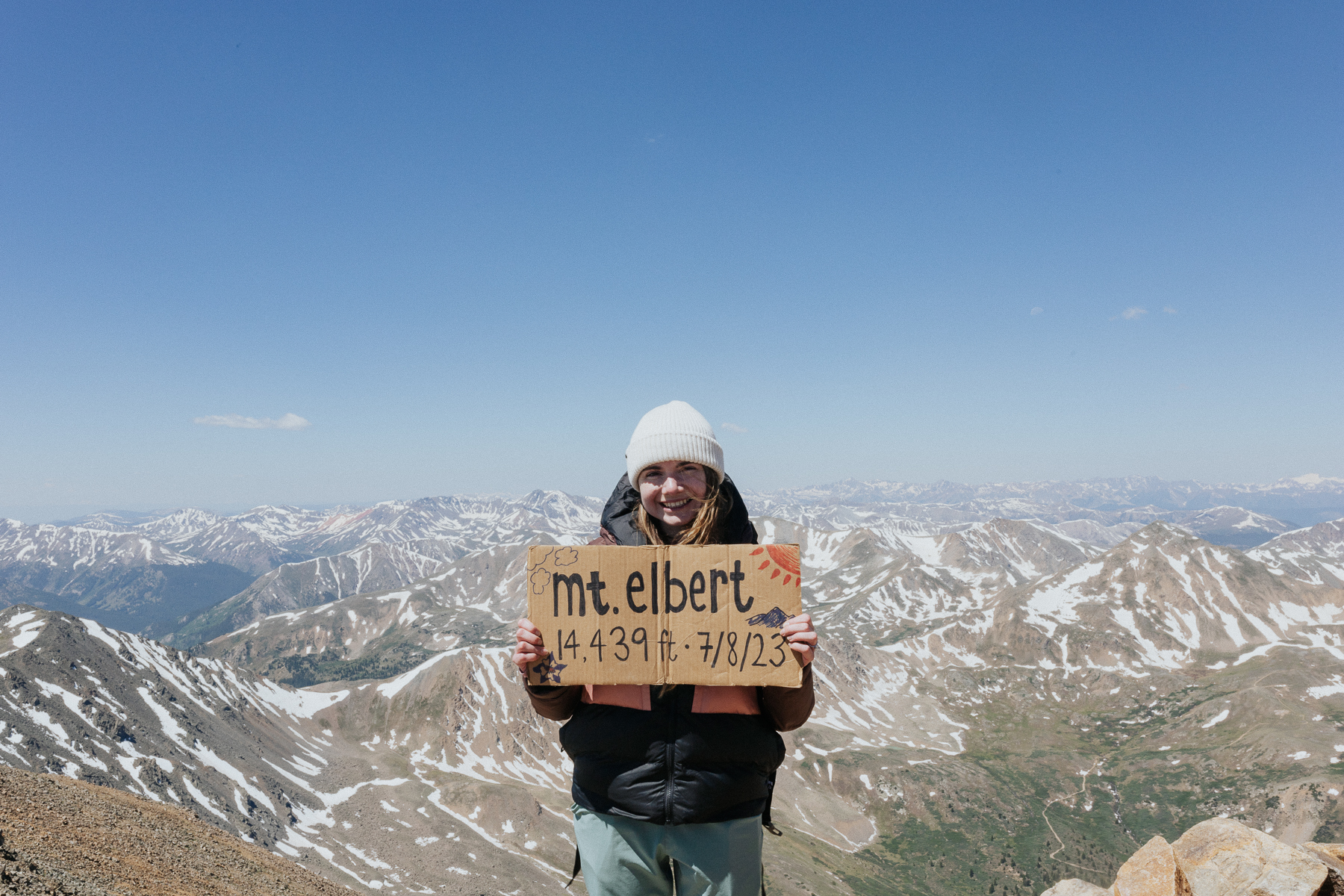

[close]
Comments